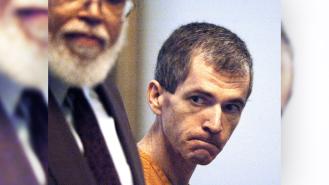
The angel of death
Beverley Allitt, or the 'Angel of Death' as she became known, has become one of Britain’s most notorious female serial killers. This is made more shocking by the fact that whilst she went on a killing spree that claimed four young lives and attempted the murder of nine other victims, she befriended the parents of her victims with her caring and solicitous manner.
Allitt exhibited some worrying tendencies early on, whilst growing up as one of four children, including the wearing of dressings and casts over wounds that she would use to draw attention to herself, without actually allowing these injuries to be examined. Becoming overweight as an adolescent, she became increasingly attention-seeking, often showing aggression towards others. She spent considerable time in hospitals seeking medical attention for a string of physical ailments, which culminated in the removal of her perfectly healthy appendix. This was slow to heal, as she insisted on interfering with the surgical scar. She was also known to self-harm, and had to resort to 'doctor-hopping', as medical practitioners became familiar with her attention-seeking behaviours, she would move to the next doctor.
She went on to train as a nurse and was suspected of odd behaviour, such as smearing faeces on walls in a nursing home where she trained. Her absentee level was also exceptionally high, the result of a string of illnesses. Her boyfriend at that time said later that she was aggressive, manipulative and deceptive, claiming false pregnancy as well as rape, before the end of the relationship.Despite her history of poor attendance and successive failure of her nursing examinations, she was taken on a temporary six-month contract at the chronically understaffed Grantham and Kesteven Hospital in Lincolnshire in 1991, where she began work in Children’s Ward 4. When she started, there were only two trained nurses on the dayshift and one for nights, which might explain how her violent attention-seeking behaviour went undetected for as long as it did.
The Arrest
"Serious Personality Disorder"
By 26 July 1991, police felt that they had sufficient evidence to charge Allitt with murder but it wasn’t until November 1991 that she was formally charged.
Allitt showed calm and restraint under interrogation, denying any part in the attacks, insisting she had merely been caring for the victims. A search of her home revealed parts of the missing nursing log. Further extensive background checks by the police indicated a pattern of behaviour that pointed to a very serious personality disorder. Allitt exhibited symptoms of both Munchausen’s syndrome, and Munchausen’s syndrome by Proxy, which are characterised by gaining attention through illness. With Munchausen’s syndrome, physical or psychological symptoms are either self-induced or feigned in oneself to gain attention. Munchausen’s by Proxy involves inflicting injury on others to gain attention for oneself. It is fairly unusual for an individual to present with both conditions.
Allitt’s behaviour in adolescence appeared to be typical of Munchausen’s syndrome and, when this behaviour failed to elicit the desired reactions in others, she began to harm her young patients in order to satisfy her desire to be noticed.
Despite visits and assessments by a number of healthcare professionals whilst in prison, Allitt refused to confess what she had done. After a series of hearings, Allitt was charged with four counts of murder, 11 counts of attempted murder, and 11 counts of causing grievous bodily harm. As she awaited her trial, she rapidly lost weight and developed anorexia nervosa, a further indication of her psychological problems.
The Crimes
The Hhorror begins
On 21 February 1991, her first victim, seven-month-old Liam Taylor, was admitted to Ward 4 with a chest infection. Allitt went out of her way to reassure his parents that he was in capable hands and persuaded them to go home to get some rest. When they returned, Allitt advised that Liam had endured a respiratory emergency but that he had recovered. She volunteered for extra night duty, so she could watch over the boy, and his parents chose to spend the night at the hospital as well.
Liam had another respiratory crisis just before midnight but it was felt that he had come through it satisfactorily. Allitt was left alone with the boy and his condition worsened dramatically; becoming deathly pale before red blotches appeared on his face, at which point Allitt summoned an emergency resuscitation team.At the time, Allitt’s nursing colleagues were confused by the absence of alarm monitors which had failed to sound when he stopped breathing. Liam suffered cardiac arrest and, despite the best efforts of the attending team, he suffered severe brain damage and remained alive only due to the use of life-support machines. On medical advice, his parents made the agonising decision to remove their baby from life support. His cause of death was recorded as heart failure. Allitt was never questioned about her role in baby Liam’s death.
Only two weeks after the death of Liam Taylor, her next victim was Timothy Hardwick, an 11-year-old with cerebral palsy, who was admitted to Ward 4 following an epileptic fit on 5 March 1991. Allitt took over his care and, again following a period when she was alone with the boy, she summoned the emergency resuscitation team, who found him without a pulse and turning blue. Despite their best efforts, the team, which included a paediatric specialist, were unable to revive him. An autopsy later failed to provide an obvious cause of death, although Liam's epilepsy was officially blamed.
Allitt's third victim, one-year-old Kayley Desmond, was admitted to Ward 4 on 3 March 1991 with a chest infection, from which she seemed to be recovering well. Five days later, with Allitt in attendance, baby Kayley went into cardiac arrest in the same bed where Liam Taylor had died a fortnight before. The resuscitation team were able to revive her and she was transferred to another hospital in Nottingham. Attending physicians discovered, during a thorough examination, an odd puncture hole under her armpit. They also discovered an air bubble near the puncture mark, which they attributed to an accidental injection but no investigation was initiated.
Five-month-old Paul Crampton became Allitt’s next victim, placed in Ward 4 on 20 March 1991, as a result of a non-serious bronchial infection. Just prior to his discharge, Allitt, who was again attending a patient by herself, summoned help as Paul appeared to be suffering from insulin shock, going into a near-coma on three separate occasions. Each time, the doctors revived him but were unable to explain the fluctuation in his insulin levels. When he was taken by ambulance to another hospital in Nottingham, Allitt rode with him and he was again found to have too much insulin. Baby Paul was extremely fortunate to have survived the ministrations of the Angel of Death.The next day, five-year-old Bradley Gibson, a pneumonia sufferer, went into unexpected cardiac arrest but was saved by the resuscitation team. Subsequent blood tests showed that his insulin was high, which made no sense to the attending physicians. A visit from Allitt later that night resulted in another heart attack and Bradley was transported to Nottingham, where he recovered.
Despite this alarming increase in the incidence of unexplained health events, all in the presence of Allitt, no suspicions were aroused at this time and she continued unchecked in her spree of violence.On 22 March 1991, two-year-old victim Yik Hung Chan turned blue and appeared in considerable distress when Allitt raised the alarm but he responded well to oxygen. Another attack resulted in his transferral to the larger hospital in Nottingham, where he recovered. His symptoms were attributed to a fractured skull, the result of a fall.
Allitt next turned her attention to twins, Katie and Becky Phillips, just two months old, who were kept in for observation as a result of their premature delivery. A bout of gastro-enteritis brought Becky into Ward 4 on 1 April 1991, when Allitt took over her care. Two days later, Allitt raised the alarm, claiming that Becky appeared hypoglycaemic and cold to the touch but no ailment was found. Baby Becky was sent home with her mother.
During the night, Becky went into convulsions and cried out in apparent pain but the doctor who was summoned suggested she had colic. Her parents kept her in their bed for observation but she died during the night. Despite an autopsy, pathologists could find no clear cause of death.
Becky’s surviving twin, Katie, was admitted to Grantham as a precaution. Unfortunately Allitt was again in attendance. It wasn't long before she was again summoning a resuscitation team to revive baby Katie, who had stopped breathing.
Efforts to revive Katie were successful but two days later she suffered a similar attack, which resulted in the collapse of her lungs. Following another revival effort, Katie was transferred to Nottingham, where it was found that five of her ribs were broken, in addition to having suffered serious brain damage as a result of her oxygen deprivation.
In a supreme twist of irony, Katie's mother, Sue Phillips, was so grateful to Allitt for saving her baby's life that she asked her to be Katie's godmother. Allitt accepted willingly, despite having inflicted partial paralysis, cerebral palsy, and sight and hearing damage on the infant.
Four more victims followed but the high incidence of unexplained attacks in otherwise healthy patients, along with Allitt’s attendance during these attacks, finally caused suspicions to be raised at the hospital. On 22 April 1991 Allitt’s violent spree was brought to an end with the death of 15-month-old Claire Peck, an asthmatic who required a breathing tube. Whilst in Allitt’s care for only a few minutes, the infant suffered a heart attack but the resuscitation team revived her successfully. Once more alone in Allitt’s presence, baby Claire suffered a second attack from which she could not be revived.
Although an autopsy indicated that Claire had died from natural causes, Dr Nelson Porter, a consultant at the hospital, initiated an inquiry. The high number of cardiac arrests over the previous two months on Ward 4 alarmed him. An airborne virus was initially suspected but nothing was found. A test that revealed a high level of potassium in baby Claire’s blood resulted in the police being summoned 18 days later. Her exhumation resulted in the discovery of traces of Lignocaine in her system, a drug used during cardiac arrest but never given to a baby.
Stuart Clifton, the police superintendent assigned to the investigation, suspected foul play. He examined the other suspicious cases that had occurred in the previous two months, finding inordinately high doses of insulin in most. Further evidence revealed that Allitt had reported the key missing to the insulin refrigerator. All records were checked, parents of the victims were interviewed and a security camera was installed in Ward 4.When record checks revealed missing daily nursing logs, which corresponded to the time period when Paul Crampton had been in Ward 4, suspicions were raised. When 25 separate suspicious episodes with 13 victims were identified, four of whom were dead, the only common factor was the presence of Beverley Allitt at every episode.
Timeline
21 February 1991: Liam Taylor,7-months-old
5 March 1991: Timothy Hardwick, 11-years-old
3 April 1991: Becky Phillips, 2-months-old
22 April 1991: Claire Peck, 15-months-old
November 1991: Arrested
15 February 1993: Trial
23 May 1993: Convicted
The Aftermath
Justice for the victims?
Rather than going to prison, Allitt was incarcerated at Rampton Secure Hospital in Nottingham, a high-security facility mainly housing individuals detained under the Mental Health Act. As an inmate at Rampton, she began her attention seeking behaviour again, ingesting ground glass and pouring boiling water on her hand.
Allitt subsequently admitted to three of the murders for which she was charged, as well as six of the assaults. The appalling nature of her crimes placed her on the Home Office list of criminals who will never be eligible for parole.
There have been accusations, most notably by Chris Taylor, father of baby Liam, Allitt’s first victim, that Rampton Secure Hospital is more like a Butlin’s holiday camp than a prison. The facility, which has some 1400 staff to deal with around 400 inmates, costs taxpayers around £2000 per week, per inmate, to administer. In 2001 there were reports that Allitt was to marry fellow inmate, Mark Heggie, although she is currently still single.
Allitt was the subject of a 'Mirror' newspaper enquiry in May 2005, when it was revealed that she had received over £25,000 in State benefits since her incarceration in 1993. In August 2006, Allitt applied for a review of her sentence which led the Probation Service to contact victims' families about the process. The review remains pending.
The Trial
"13 life sentences still not enough"
After numerous delays due to her "illnesses," (as a result of which she had lost 5 stone in weight) she went to trial at Nottingham Crown Court on 15 February 1993, where prosecutors demonstrated to the jury how she had been present at each suspicious episode, and the lack of episodes when she was taken off the ward. Evidence about high readings of insulin and potassium in each of the victims, as well as drug injection and puncture marks, were also linked to Allitt. She was further accused of cutting off her victim’s oxygen, either by smothering, or by tampering with machines.Her unusual behaviour in childhood was brought to light and the paediatrics expert, Professor Roy Meadow, explained Munchausen’s syndrome and Munchausen’s by Proxy syndrome to the jury, pointing out how Allitt demonstrated symptoms of both, as well as introducing evidence of her typical post-arrest behaviour, and high incidence of illness, which had delayed the start of her trial. It was Professor Meadows’ opinion that Beverley Allitt would never be cured, making her a clear danger to anyone with whom she might come in contact.
After a trial that lasted nearly two months (and at which Allitt attended only 16 days due to continued illness), Allitt was convicted on 23 May 1993, and given 13 life sentences for murder and attempted murder. It was the harshest sentence ever delivered to a female but, according to Mr Justice Latham, it was commensurate with the horrific suffering of the victims, their families, and the ignominy she had brought upon nursing as a profession. Indeed, the impact on the Grantham & Kesteven Hospital was so severe that the Maternity Unit was closed down altogether.


